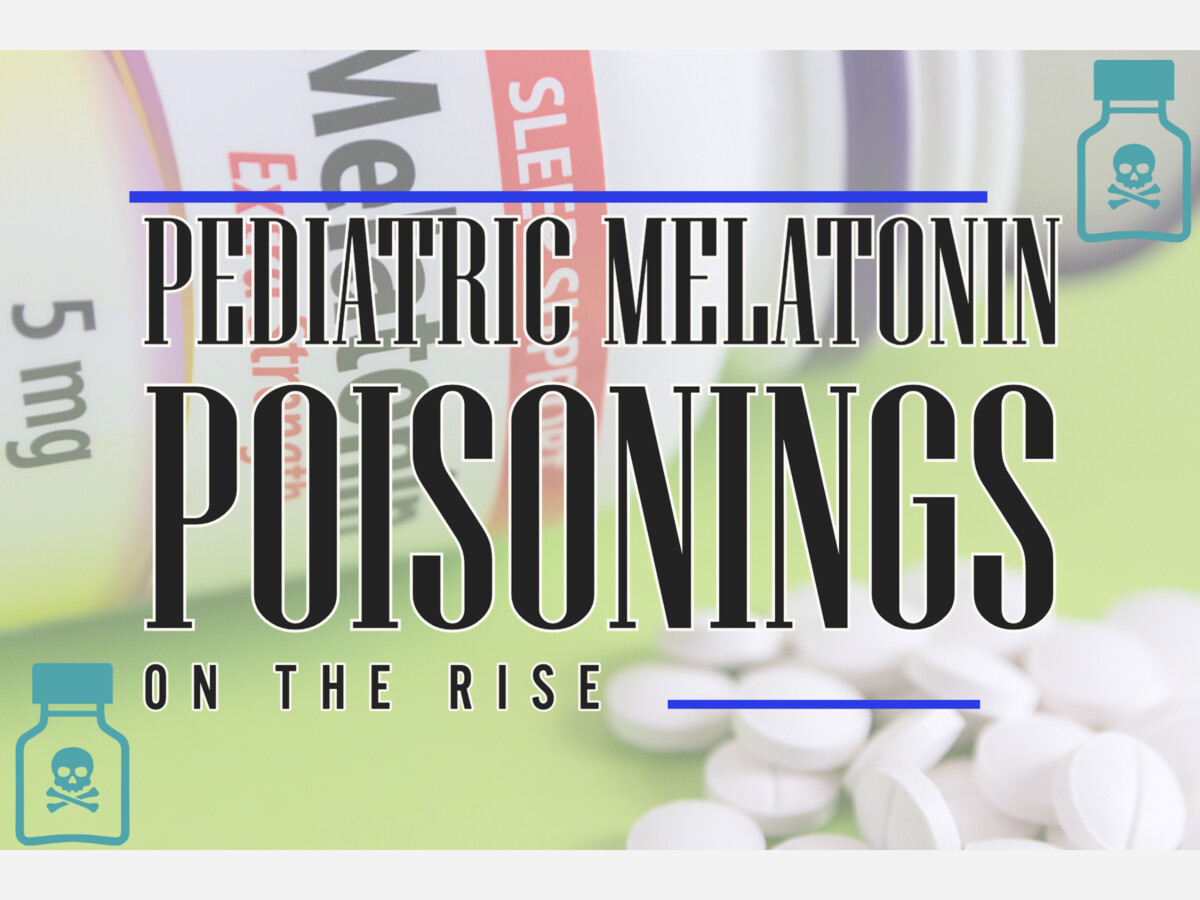Image

America has a sleep problem, as indicated by our increased reliance on the sleep-regulating hormone and over-the-counter supplement melatonin.
Since the pandemic, sales of melatonin have increased tremendously as more seek relief from anxiety and sleep disruptions. (Although there is no evidence that suggests melatonin actually helps you sleep)
In 2016, melatonin sales captured $285 million; by 2020, sales for melatonin jumped 188% to $821 million.
Coinciding with this rise in melatonin sales is the scary trend of melatonin poisonings among children and teens.
52,563 calls were placed to US Poison Control concerning children consuming worrisome amounts of melatonin in 2021 – a 530% increase from 2012, with the largest yearly increase occurring from 2019 to 2020.
Pediatric melatonin ingestions accounted for 0.6% of all pediatric poison control cases in 2012. By 2021 melatonin accounted for nearly 5% of all pediatric poison control cases.
In 2020, melatonin was the most often ingested substance among children reported to poison control.
Over a ten-year period, from January 2012 to December 2021, 260,435 cases of pediatric melatonin poisoning were reported to the US Poison Control National Poison Data System (NPDS).
Of these cases, 5 children were hospitalized and required mechanical ventilation, and 2 children died (both younger than 2-years).
Most of these hospitalizations were for teens, many believed to be suicide attempts aimed at ingesting large amounts of melatonin.
People, especially adults, can tolerate large amounts of melatonin without significant harm, however, there is no antidote for an overdose.
In adults, the standard dose of melatonin is between 1 and 10 mg, although, as a supplement, there isn’t one agreed-upon “best” dosage. It is believed that doses in the 30-mg range may be harmful to adults.
Children may experience seizures in doses between 1 and 5 mg, however, kids have been known to accidentally ingest much larger doses with no immediate or long-term negative consequences.
The National Capital Poison Center describes a case of a 2-year-old boy who swallowed up to 138 mg of melatonin over an hour: the boy slept for a couple of hours and was fine.
Similarly, a 4-year-old girl swallowed an estimated 39 mg of liquid melatonin: she didn’t develop drowsiness or any other symptoms and was unharmed.
One more case: a 50-year-old woman took a deliberate overdose of 100 mg of melatonin in time-release tablets. She developed drowsiness that persisted for about 12 hours and her pulse rate was slightly increased for a few hours before fully recovering.
Melatonin is relatively safe if taken for short periods of time, but there is no concrete research as to the long-term effects of continued melatonin use.
Most of these reported pediatric cases involved children accidentally consuming large amounts of melatonin, often because the supplement comes in the form of gummies – attractive to children.
The biggest concern with the increase of pediatric melatonin poisoning cases is the lack of accuracy on the supplement’s label.
Research has consistently found that details on the labels of many melatonin supplements may not match what’s actually inside the bottle.
In a 2017 study published in the Journal of Clinical Sleep Medicine, a total of 31 melatonin supplements were analyzed for melatonin content. It was found that the melatonin content in these supplements ranged from -83% to +478% of the labeled content. Additionally, serotonin, a controlled substance used in the treatment of neurological disorders, and a breakdown product of melatonin, was identified in eight of the 31 tested supplements.
In most cases (71%), melatonin content did not match the label within a 10% margin error. Additionally, 26% of tested melatonin supplements contained serotonin.
The lack of accuracy on labels is a major concern for poison control centers. When children ingest large amounts of melatonin, many factors come into play that determines the child’s reaction. Often inaccuracies on the label lead to either unnecessary panic or naïve confidence.
The first sign that you’ve taken too much melatonin is that you’ll continue to feel its soporific effects the following day. You may feel drowsy or groggy or have a headache.
Other signs that someone may have taken too much melatonin include:
Avoid taking melatonin with alcohol or caffeine, and before starting the supplement talk with your doctor, especially if you take other medications.
Birth control pills may cause your body to produce more melatonin and taking a melatonin supplement simultaneously may push your levels to an unhealthy range.
Taking melatonin with anticoagulant drugs, such as warfarin, could increase your risk of bleeding.
Melatonin, while unregulated by the FDA and considered a supplement, can be dangerous. Keep melatonin supplements locked in your medicine cabinet and away from children.
* DISCLAIMER: The information, including but not limited to, text, graphics, images, and other material contained in this article, is for informational purposes only. No material on this site is intended to be a substitute for professional medical advice, diagnosis, or treatment. Always seek the advice of your physician or other qualified healthcare providers with any questions you may have regarding a medical condition or treatment, and before undertaking a new health care regimen. Never disregard professional medical advice or delay in seeking it because of something you have read in this article.
Follow Morristown Minute on Facebook, Instagram, and Twitter for more state and local updates.